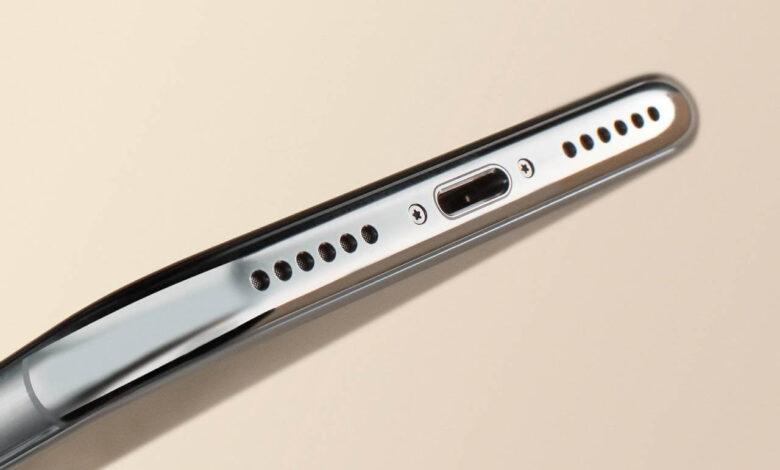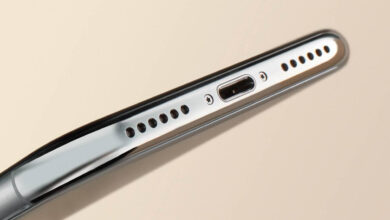How Many Decibels is a Phone Speaker: Understanding Volume Levels

When evaluating the loudness of your phone’s speaker, it’s measured in decibels (dB), a universal unit used to express sound level. The speakers in smartphones are engineered to produce enough volume for calls, media consumption, and sometimes even substituting for a full speaker in a pinch. Typically, the output from these tiny audio components ranges from about 85 dB to 120 dB, depending on factors like the phone’s model and design.
If you’re curious about your own device, newer and higher-end phones generally pack a more powerful auditory punch, with some reaching up to 3 watts of power. This wattage directly relates to the maximum volume output your phone can achieve. For instance, an iPhone 12 with its stereo speakers can reach volumes around 120 dB, sufficient for providing clear and immersive sound in various environments.
Understanding the dB levels of phone speakers helps you gauge how they compare with other sound sources and their suitability for your listening needs. It’s a crucial aspect to consider, especially when using your phone in noisy environments or if you’re particular about sound quality. Remember, while louder might be better in some cases, it’s the clarity and richness of sound that usually provides a more enjoyable listening experience.
Understanding Sound Measurement
When you measure sound from your phone speaker, you’re dealing with decibels. This unit quantifies sound pressure levels, providing a frame of reference for loudness.
Basics of Decibels
Decibels (dB) are a logarithmic unit used to describe the ratio of a sound’s intensity to a reference level. Here’s what you need to know:
- A decibel is one-tenth of a bel, a less commonly used unit.
- The decibel scale is logarithmic, not linear. This means that an increase of 10 dB equates to a perceived doubling of loudness.
- Even a small increase in decibels represents a significant increase in sound pressure level.
Decibels in Daily Life
In everyday settings, decibel levels can vary widely:
- A whisper typically measures around 20 dB.
- Normal conversation falls at about 60 dB.
- A phone speaker can reach up to around 120 dB in some models, which approaches the threshold of pain (~130 dB).
Mobile Phone Speaker Specifications
Your smartphone’s ability to deliver sound is defined by its speaker specifications, which include wattage and decibel output. Let’s explore these to give you an understanding of what to expect from your device’s audio capabilities.
Standard Phone Speaker Range
Most smartphones are equipped with speakers that have a wattage ranging from 1.5 to 3 watts.
- Older models: Around 1.5 watts
- Newer models: Up to 3 watts
In terms of decibels, phone speakers can typically reach volumes around 94 dBA to 120 dBA. For example:
| Smartphone Model | Speaker Wattage | Maximum Volume (Approx.) |
|---|---|---|
| Samsung Galaxy S22 | 3 W | 120 dB |
| iPhone 14 | 3 W | 120 dB |
| Samsung Galaxy S21 | 2.2 W | – |
| iPhone 12 | – | 120 dB |
| iPhone 2G | – | 94.3 dBA |
| iPhone 3GS | – | 103.6 dBA |
Please note that the figures may vary depending on the source and testing standards.
Comparison with Other Devices
When comparing your smartphone’s speaker to other devices, there’s a notable difference in sound output. For instance:
- Laptops: Generally in the range of 5 W to 10 W.
- Bluetooth portable speakers: Can often handle around 3 W to 10 W or more, with premium models offering higher wattage.
- Home theatre systems: These can be significantly more powerful, often operating at 50 W to 100 W per channel.
Remember, higher wattage and decibel levels in home audio systems translate to louder and often clearer sound, but in the tight confines of a smartphone, engineers are challenged to balance quality, volume, and power consumption.
Factors Affecting Speaker Loudness
When you’re exploring why some phone speakers are louder than others, consider that both the design of your device and its software settings play crucial roles.
Device Design Impact
Your phone’s speaker loudness is heavily influenced by its design. Each component from the quality of the speaker itself, the size or thickness of the phone, to the materials used for the speaker’s enclosure can affect the decibel level. For instance:
- Size of the Speaker: Larger speakers can typically move more air, resulting in higher volume.
- Speaker Quality: High-quality components can produce clearer and often louder sound.
- Enclosure and Placement: The space where the speaker sits within the phone impacts sound quality and loudness as well.
Software Control
The software on your phone can also control and adjust the speaker’s loudness through:
- Volume Limit Settings: Your phone may have settings that cap the maximum volume to protect your hearing.
- Equalizer Adjustments: Alterations to the balance of frequencies can make the speaker sound louder even without increasing the decibels.
Health and Safety
When using phone speakers, it’s important to be mindful of volume levels to ensure your long-term hearing health. Keeping sound at safe decibels can prevent potential hearing damage.
Safe Listening Levels
Your phone speaker can vary in output, but it’s your responsibility to maintain a safe listening level. Guidelines suggest:
- Safe Volume: Aim for 50 to 60 percent of your phone speaker’s maximum volume.
- Duration of Exposure: Be cautious about how long you listen; the louder the sound, the shorter your exposure should be.
For example, 70 dB, similar to a conversation, is typically safe for prolonged exposure.
Preventing Hearing Damage
To prevent hearing damage from your phone’s speakers:
- Set Volume Limits: Use your phone’s settings to cap volume at a safe level.
- Monitor Listening Time: Limit your exposure to louder volumes. Sounds above 85 dB, like a lawnmower, can risk damage after 2 hours, while volumes above 105 dB can cause damage in minutes.
Always be aware of your auditory environment and take steps to protect your ears, like using earplugs in noisy settings.
Measuring Phone Speaker Decibels
When assessing the loudness of your phone speaker, you’ll be dealing with measurements in decibels (dB). Understanding decibel levels can help you determine how your phone compares to other devices in terms of volume.
Tools for Measurement
To accurately measure how many decibels your phone speaker emits, you’ll need a sound level meter or a decibel meter app. These tools listen to the sounds coming from your speaker and display a dB value.
- Recommended tools:
- Sound Level Meter: A standalone device designed for precise measurements.
- Decibel Meter App: A convenient alternative that uses your smartphone’s microphone. Apps like “Decibel X” or “Sound Meter” are popular choices.
Interpreting Measurements
Once you’ve got your reading, interpreting it is crucial to get an idea of what the numbers mean. Phone speakers often range from 60 dB to 120 dB depending on the make and model.
- Decibel range interpretation:
- 60 dB: Comparable to normal conversation or background noise.
- 80-90 dB: Similar to heavy traffic or a noisy restaurant.
- 120 dB: Reaching the threshold of pain for some individuals and comparable to a rock concert.
Remember, prolonged exposure to sound levels above 85 dB can potentially damage your hearing. Use your measurements to enjoy audio safely.
What Are Common Issues with Phone Speakers and How Can They Be Fixed?
Are you experiencing issues with your phone speakers? Common problems include low volume, distorted sound, or no sound at all. To address these issues, try quick speaker fixes like cleaning the speaker openings, checking for software updates, or resetting your phone. If problems persist, consult a professional for further assistance.
Enhancing Phone Speaker Volume
Sometimes your phone’s speaker doesn’t quite cut it in terms of volume. Whether you’re trying to listen to music, watch videos, or take a call hands-free, you may find yourself wishing for a little more power. Let’s explore how to give your phone’s speaker a boost.
Volume Boosting Accessories
- External Speakers: Connect to an external Bluetooth speaker for enhanced sound quality and volume.
- Phone Cases with Built-in Amplifiers: Some cases are designed to amplify your phone’s native speaker.
- Earpiece Volume Boosters: These are small devices that you can attach directly to your phone’s speaker to increase the volume for calls.
Software Enhancements
- Third-party Apps: Download apps specifically created to increase the volume output of your phone.
- Equalizer Settings: Adjust the built-in equalizer settings for better sound quality, which can make the speaker sound louder.
- Audio Mods: If you’re tech-savvy, consider installing custom ROMs or mods that improve the phone’s audio system. (Note: This could void your warranty.)
Future of Phone Speakers
In your journey through the ever-evolving world of technology, you’ll find that phone speakers are on the brink of impressive advancements. Here’s a peek into what’s coming up next.
Technological Advancements
You can expect to encounter more phone speakers boasting higher wattage and improved sound quality. Smartphones will likely integrate stereo speakers that can deliver a richer and more immersive audio experience, potentially reaching louder volumes without distortion. Some models might offer a maximum volume of around 120 dB, which is substantial for a device that fits in your pocket.
Trends in Sound Engineering
Your phone speakers will not just be louder but smarter too. Adaptive audio algorithms are becoming a trend, aiming to tailor the sound output to your individual hearing profile and preferences. It’s like having a sound engineer in your pocket, optimizing your music in real-time. Additionally, the focus will further shift towards energy efficiency, ensuring your phone can deliver high-quality sound without compromising the battery life too quickly.
